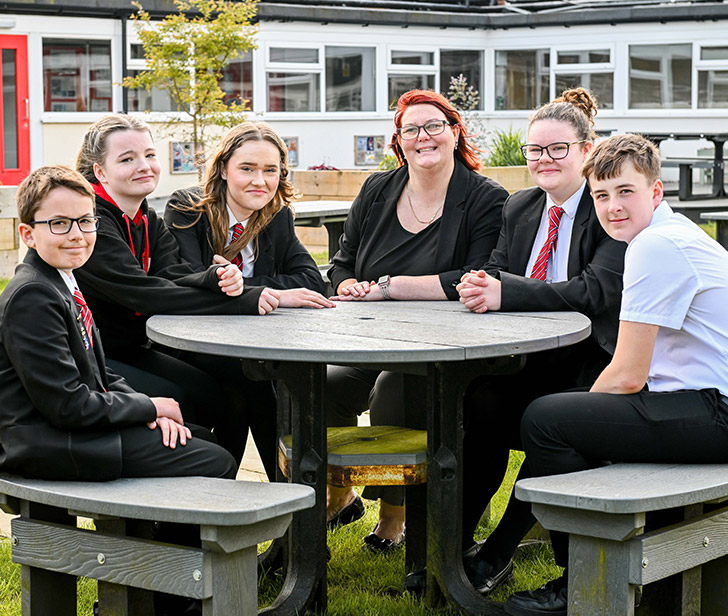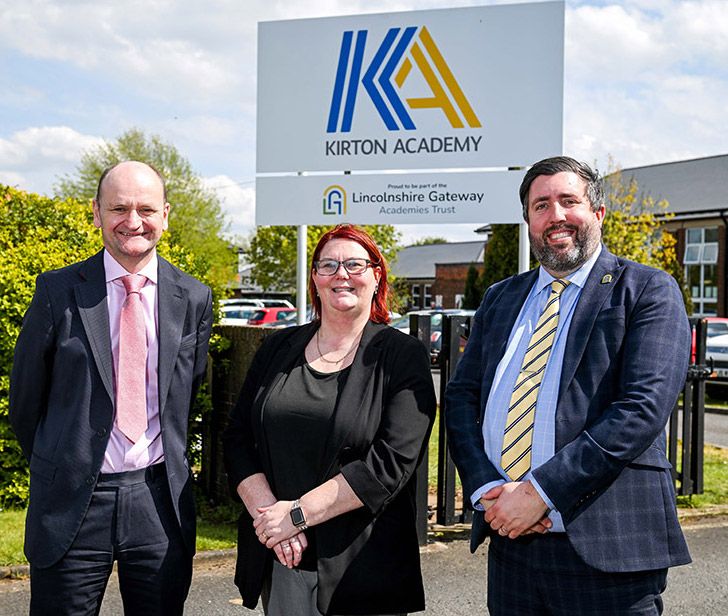Art & Design
1. Rationale
At Kirton Academy School we highly value the creative arts and the opportunities and career prospects it opens to our students. Our teachers are passionate about their subject specialisms and it is our ambition to pass on this enthusiasm to our students. In KS3 Art, Design and Technology (ADT) are taught via rotation throughout years 7, 8 and 9. Students have 2 hours of ADT a week in the areas of Art, Art Textiles, Food Technology and Resistant Materials. Each separate subject area is broken down into sequenced programs of study designed to prepare students for later life. The lessons are structured to give the students the best preparation to go on to study the optional subjects GCSE Art, GCSE Art Textiles, GCSE Design and Technology and Hospitality and Catering Level 1 or Level 2.
Students work practically in a wide range of materials and mediums to expose them to new experiences and concepts. In Art, we focus on developing students understanding of how other artists and designers work expressing ideas and emotions, using other people's work as a springboard to inspire their ideas. Students work in mediums such as paint, ink, clay, and textiles, with projects increasing in complexity through years 7, 8 &9. In Resistant Materials students work in a wide range of materials including plastics and wood, employing both hand tools, larger machinery and computer aided design. Students work through a design process from idea conception to product development, with an increasing focus on the environmental impact of materials and technology. In Food Technology students learn about how different food groups are needed by the body, how we consume and enjoy foods from around the world as well as the different food choices people can and have to make. Alongside this they learn increasingly complex food preparation skills enabling them to grow in confidence and be more independent in their own self-care.
Through all our subject areas we aim to give students an insight into the career routes they could take and the wide range of industries they could aspire to work in.
2. Aims
2.1 Art and Textiles
- Opportunities
- Rural neighborhoods tend to have a strong community identity and this is evident in Kirton in Lindsey and its surrounding catchment area. There is an increased sense of pride in the school and this will be further built upon by an increased connection with the local community. We aim for local communities to regard the school as a place where students can realize their ambitions and learn skills to prepare them for employment. As a faculty we aim to be involved in more community projects and events. We are also aiming to create a strong connection with local feeder primary schools who use the schools Art, Design and Technology facilities.
- Local Universities such as Lincoln and Hull have seen great successes and led to huge developments and investments in both cities. There has also been the recent arrival of University Campus North Lincolnshire opening up local higher education paths to students. We aim to build partnerships with higher education providers and expose students to a range of careers paths and opportunities.
- The Humber bank connected to 25% of the UK's energy generation has a major role to play in reaching net zero and big economic opportunities around decarbonisation. Significant levels of investment in the area are anticipated over the coming years making the Humber a major hub for renewables in the UK. Northern Lincolnshire is uniquely positioned to be at the centre of growth in offshore wind and green energy. Our aim is to build partnerships with local employers and ensure our students are prepared with the skills and expertise employers are looking for.
2.2 Resistant Materials
- develop the creative, technical and practical expertise needed to perform everyday tasks confidently and to participate successfully in an increasingly technological world
- build and apply a repertoire of knowledge, understanding and skills in order to design and make high-quality prototypes
- use research and exploration, such as the study of different cultures, to identify and understand user needs
- identify and solve their own design problems and understand how to reformulate problems given to them
- develop and communicate design ideas using annotated sketches, detailed plans, 3-D and mathematical modelling, oral and digital presentations and computer-based tools
- select from and use specialist tools, techniques, processes, equipment and machinery precisely, including computer-aided manufacture
- investigate new and emerging technologies
2.3 Food
- understand and apply the principles of nutrition and health
- cook a repertoire of predominantly savoury dishes so that they are able to feed themselves and others a healthy and varied diet
- become competent in a range of cooking techniques [for example, selecting and preparing ingredients; using utensils and electrical equipment; applying heat in different ways; using awareness of taste, texture and smell to decide how to season dishes and combine ingredients; adapting and using their own recipes]
- demonstrate an awareness of the dietary needs and choices of different groups such as religious needs, medical needs, health, ethical and moral choices
- understand the source, seasonality and characteristics of a broad range of ingredients.
- have an understanding about sustainability and environmental impact of our food choices
3. The rationale for Sequencing (Scope and Rigour)
When students come to secondary school their experience of Art, Design and Technology at primary school varies vastly and is most often underdeveloped. As students begin in Y7 they are introduced to basic equipment, materials and processes to ensure they have solid foundations for the rest of KS3. By Year 8 and 9 students are able to undertake more complex projects, using an increasingly complex range of tools and equipment. Projects allow for more independent choices and students are encouraged to take creative risks with their choices. Throughout KS3 students increasingly are made aware of how their learning leads into KS4 choices.
3.1 Why?
Students often are ill exposed to career progression and opportunities within the Arts, Design and Technology (including food related careers). Students' understanding of the opportunities they can aspire to helps underpin their intrinsic motivation. Students who are aware of progression routes tend to be more invested in their own learning.
Frequently literacy, numeracy and science are linked into our lessons, to encourage deeper understanding and application of core principles of learning. By incorporating historical, geographical and cultural subject matter, students can make connections between disciplines, fostering critical thinking and allowing students to draw deeper connections within their learning.
4. Research informing the Sequencing decisions
Both Rosenshine's Principles of Instruction and Cognitive Load Theory have informed our curriculum sequencing and implementation. Both recognise the importance of memory in building schemas required to develop mastery and retention. Our schemes of work are sequenced so that students revisit skills and build upon prior learning over time, chunking more complex concepts into smaller parts. By limiting the amount of new information students are exposed to at one time, we can check understanding before moving the learning on. A scaffolded approach, combined with modelling and step by step success criteria means students are exposed to new skills and concepts gradually, building strong foundations and links across texts and skills.
5. Key Themes KS3
|
Material Principles |
Students are introduced to an increasing repertoire of materials. In Design and Technology students explore the working properties of materials such as wood, plastics and metal. In Art different materials and mediums are used such as paint, clay, textiles to realise their ideas. In Food different ingredients are explored in different combinations and using different cooking and preparation methods. |
|---|---|
|
Culture |
Students look to different cultures as starting points for their creative works. Students are taught the wider context of creative influences and are taught analysis and evaluation skills. In Art students look at British culture through artist Sarah Graham and textile artist Lucy Sparrow In Design and Technology students use the work of British Nigerian Yinka Ilori and British Mary Quant as starting points for their designs. In Food students look at different staple foods from around the world.
|
|
Identity |
Students look at what makes something a characteristic. In Design and Technology students create client profiles and generate a target market for their product. In Food students learn about the different food choices people can and must make. In Art students look at portraiture, identifying their own characteristics and what makes them unique. |
How we have researched the Curriculum:
To help us develop this curriculum we have:
-
sequenced the curriculum to best prepare our students for the requirements of the GCSE’s we offer at Kirton Academy
-
registered all members of the department with the Design and Technology Association
-
sourced our schemes of work from national subject experts
-
Joined online subject specialist groups
Download — 5-Year Learning Journey
Download — Curriculum Overview


